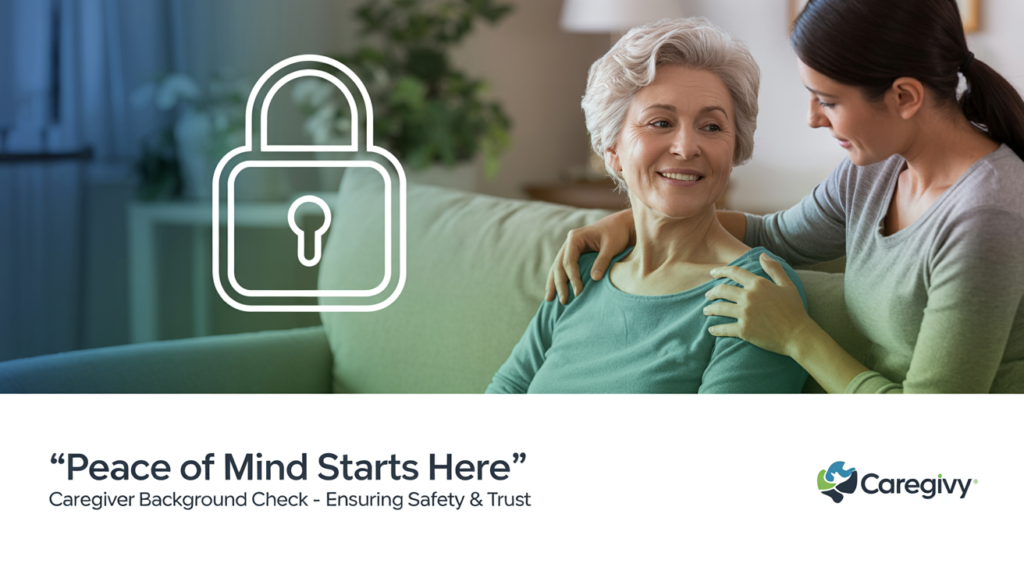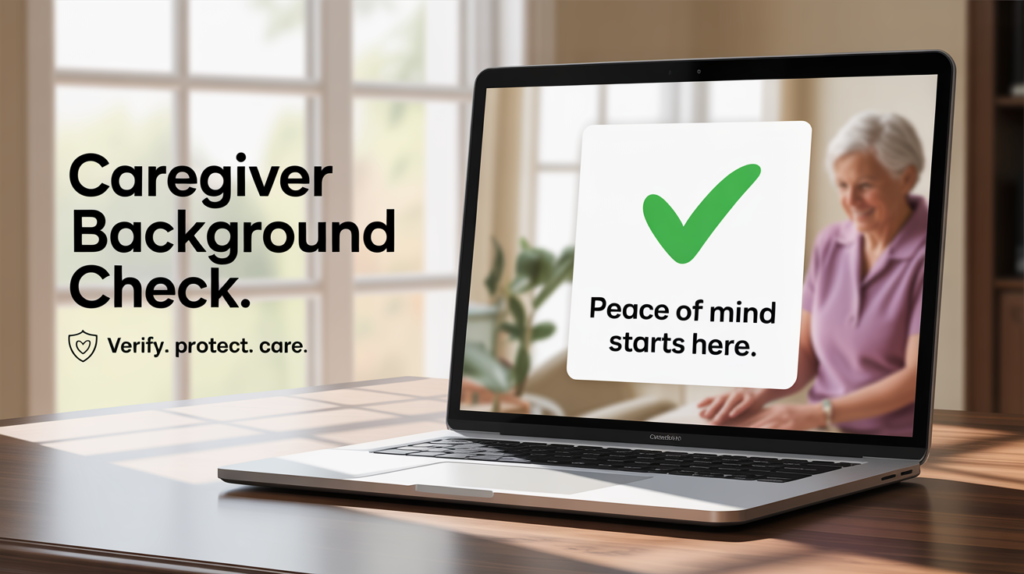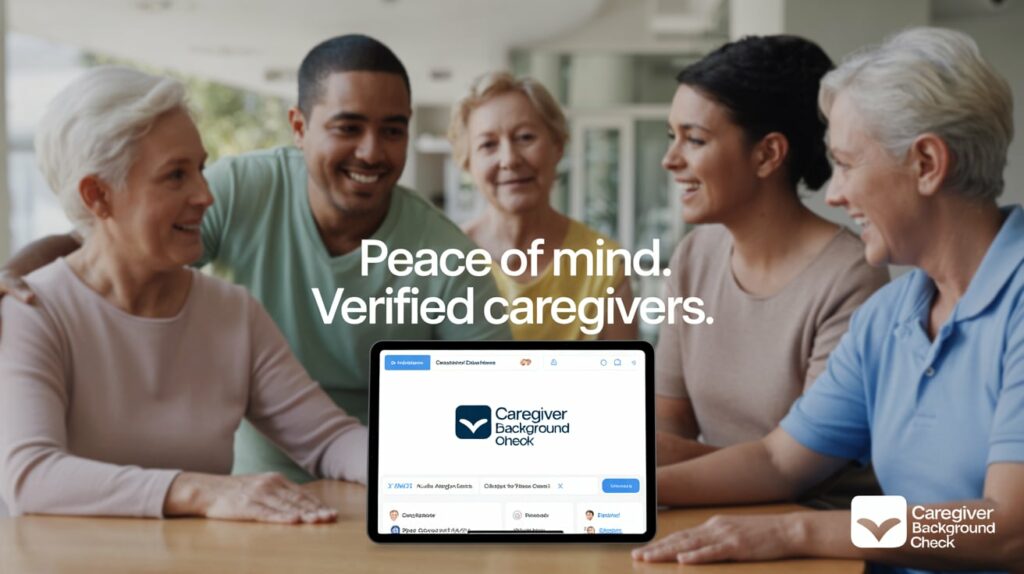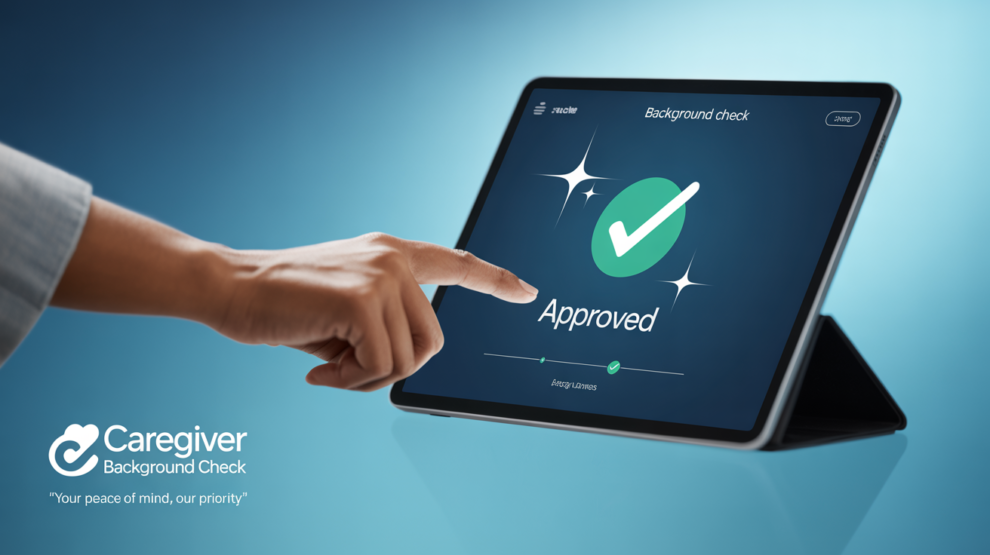In a world where trust is everything, choosing the right caregiver is a decision that demands diligence. This in-depth guide on Caregiver Background Checks in 2025 explores how families, agencies, and healthcare providers can ensure safety, compassion, and compliance by thoroughly screening those entrusted with our most vulnerable loved ones. Learn what to check, how to comply with state and federal laws, and why getting it right isn’t optional—it’s essential.
Table of Contents
As the demand for trustworthy caregivers rises in 2025, families and healthcare providers alike are placing greater emphasis on conducting a thorough caregiver background check. The caregiver background check serves as a critical tool in protecting vulnerable populations such as the elderly, children, and individuals with disabilities. From in-home care agencies to private employers, ensuring that a caregiver is qualified, responsible, and safe is no longer optional—it is a vital standard.
This comprehensive guide explores everything you need to know about the caregiver background check, including what it covers, how it is conducted, what red flags to look for, and the legal considerations involved. We will also address frequently asked questions, best practices for implementation, and links to government resources. Whether you are a family member hiring a private caregiver or a healthcare facility overseeing home care providers, this guide is designed to help you understand the importance of a caregiver background check in 2025.
What Is a Caregiver Background Check?
A caregiver background check is a multi-faceted screening process used to verify the criminal, professional, and personal history of individuals applying for caregiving roles. The main goal is to ensure that the person entrusted with caregiving responsibilities is safe, trustworthy, and qualified.
Common settings where a caregiver background check is required include:
- In-home elder care
- Assisted living facilities
- Hospitals and clinics
- Child care homes
- Disability care services
The caregiver background check has become a legal and ethical standard for reducing risk, maintaining safety, and building trust.
Essential Components of a Caregiver Background Check

1. Identity Verification
This first step confirms that the caregiver is who they claim to be. The employer or agency will verify:
- Full legal name
- Date of birth
- Social Security Number
- Past aliases
- Address history
2. Criminal History Check
This is one of the most important aspects of a caregiver background check. It typically includes:
- County, state, and federal criminal record searches
- Sex offender registry checks
- Domestic abuse or restraining order records
- Global watchlists and terrorist databases
A clean record is often mandatory for caregiving positions. Employers should pay close attention to crimes related to violence, theft, or abuse.
3. Employment History Verification
To validate experience and reliability, the caregiver background check includes employment verification:
- Previous caregiving jobs
- Employment dates
- Duties and responsibilities
- Reasons for leaving
- Rehire eligibility
4. Education and Certification Checks
Caregiving often requires specific training. Background screening includes:
- Verification of diplomas and degrees
- Certification in first aid and CPR
- Licenses for nursing assistants or medical aides (if applicable)
5. Professional License Verification
If the caregiver holds a medical or nursing license, the employer must verify:
- License number and state of issue
- Status (active, suspended, revoked)
- Disciplinary actions, if any
6. Reference Checks
Personal and professional references offer insight into the caregiver’s character, attitude, and reliability. Agencies and families should contact:
- Former supervisors
- Co-workers
- Clients or family members
7. Drug Screening
Especially for caregiving roles involving medication administration or heavy equipment operation, drug tests may be required. This could include:
- Urinalysis or saliva testing
- Random follow-up tests during employment
8. Motor Vehicle Record (MVR) Check
For caregivers who drive clients, an MVR check ensures they have a safe driving history. It includes:
- Valid driver’s license
- Accident history
- DUI/DWI convictions
- Active violations
9. Credit Check (When Applicable)
Although not always required, some families or agencies may request a credit check. This is more common for live-in caregivers or those handling financial tasks.
10. Abuse Registry Check
Many states maintain a registry of individuals found guilty of abuse or neglect in healthcare settings. This is an essential part of the caregiver background check in 2025.
Legal Compliance for Caregiver Background Checks

In the U.S., caregiver background checks must comply with several laws:
Fair Credit Reporting Act (FCRA)
- Requires written consent from the caregiver
- Mandates disclosure if adverse action is taken based on the report
Equal Employment Opportunity Commission (EEOC)
- Prohibits discrimination based on race, gender, disability, etc.
State Regulations
- Some states require specific checks through designated agencies such as:
Why Caregiver Background Checks Are More Important Than Ever in 2025
In the post-pandemic world, with rising instances of elder abuse and healthcare fraud, conducting a caregiver background check is no longer a formality. It’s a necessity for:
- Protecting loved ones from abuse or neglect
- Avoiding legal liability
- Ensuring caregivers are trained and credentialed
- Providing peace of mind to families
How to Conduct a Caregiver Background Check
Step 1: Obtain Written Consent Caregivers must provide written authorization before any background screening begins.
Step 2: Choose a Reputable Screening Provider Use agencies or platforms that specialize in caregiver background checks. Look for accreditation by the Professional Background Screening Association (PBSA).
Step 3: Collect and Verify Information Compile all relevant documentation:
- Resume
- Government-issued ID
- Certifications and licenses
Step 4: Run the Checks Initiate checks through approved databases and agencies. This can be done directly or via third-party screening services.
Step 5: Review Results and Make Informed Decisions Assess the findings carefully. If red flags appear, discuss them with the candidate before making a decision.
Step 6: Keep Records Secure Store all background check reports and consent forms in a secure, compliant manner.
Best Practices for Employers and Families

- Use a standardized caregiver background check template
- Update screenings every 12 to 24 months
- Verify training and ongoing education
- Maintain transparency with the caregiver
- Follow up on references and documented red flags
Common Red Flags in a Caregiver Background Check
- Criminal convictions related to abuse, violence, or fraud
- Multiple job changes without explanation
- Expired or revoked professional licenses
- Inconsistent education or employment records
- Negative or unresponsive references
FAQs: Caregiver Background Check
Q1: How long does a caregiver background check take?
Typically between 2 to 7 business days depending on the depth of the screening and jurisdictions involved.
Q2: Is a background check required by law for caregivers?
In most states, yes, especially if the caregiver is working in regulated facilities or through an agency.
Q3: Can I conduct a caregiver background check myself?
Yes, you can. However, using a professional screening company is recommended for accuracy and legal compliance.
Q4: What happens if a caregiver fails the background check?
If adverse action is taken, the caregiver must be notified and given a copy of the report along with a chance to dispute inaccuracies.
Q5: Are caregiver background checks recurring?
Some employers conduct recurring checks annually or bi-annually to ensure ongoing compliance.
Conclusion
A caregiver background check is the foundation of safe, responsible hiring in 2025. It protects the most vulnerable, builds trust, and ensures that care providers meet the highest standards of integrity and professionalism. Whether you’re hiring a live-in caregiver for a loved one or screening staff for a senior care facility, conducting a comprehensive caregiver background check is essential.
With the rise of digital screening tools and access to public databases, performing an in-depth caregiver background check is now more feasible and necessary than ever. Follow the best practices, comply with state and federal regulations, and prioritize the safety and well-being of those who depend on care. The caregiver background check is not just a requirement; it is a responsibility.
Do Follow Dragcast on Social Media For More Such Content.












Add Comment